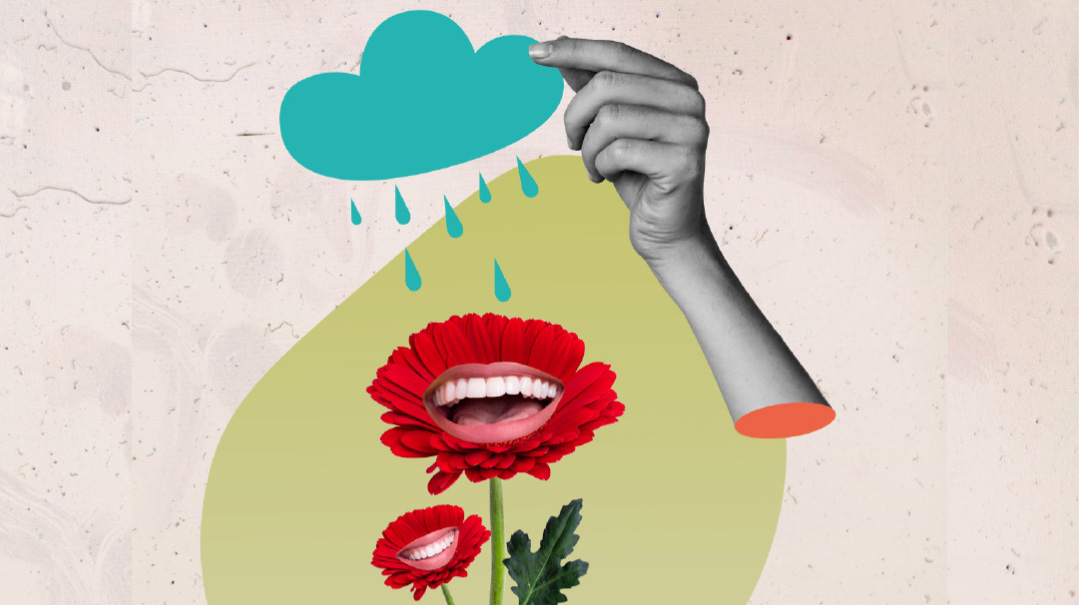Not Just One or the Other
| October 31, 2023The idea of and, that we can hold two conflicting emotions at once, has its roots in DBT therapy

Not Just One or the Other
Zipora Schuck and Devora Schuck
A nine-year-old girl runs home eagerly on her birthday. On the dining room table is a large rectangular box, wrapped in colorful paper, tied with ribbons, and topped by a card with her name on it. She hopes it’s the gift she told her friends she was dreaming about, perhaps an American Girl doll, or an art set. Tearing off the paper she uncovers a 2,000-piece toothpick model of the Hoover Dam. Tears spill down her face as she pushes away the box.
For most of us, other than Hoover Dam aficionados, a situation like this would present us with only the overriding emotion of disappointment. But what if she had opened the box to find a camera? While she might still have been disappointed that it wasn’t the gift she was dreaming about, she might also acknowledge that she may come to enjoy it.
A woman sees a small, wrapped square box on her dining room table with her husband’s handwriting on the card. She unwraps the gift excitedly to find a vegetable shredding blade for her food processor. Most likely, she’ll feel two seemingly opposing emotions. She’s happy that her husband remembered her birthday and tried to think of some way to make her life easier, and very disappointed that it wasn’t a piece of jewelry.
The idea of and, that we can hold two conflicting emotions at once, has its roots in DBT therapy. Using this concept, we can help our children move away from all-or-nothing thinking, which happens when we feel we have to negate one feeling in order to experience another. Children and adults are capable of holding conflicting feelings simultaneously.
Your eighth grader can be excited for the graduation trip and concerned about getting carsick on the long bus ride. Your son may have been embarrassed to be chosen last for the baseball team and happy to be playing with the older boys.
Sometimes, the conflict is between what we know to be true logically and what we feel emotionally.
Many of your 13-year-old daughter’s friends are going to sleepaway camp this year. She knows she’ll have a great time and enjoy the experience, but feels scared that she’ll be homesick. Thinking that it’s one or the other leaves her with two limited options. She can listen to the fear and not go, or go and possibly be very homesick. The word but insinuates that only one side of the equation can be true, while and allows for both. Acknowledging the fear alongside her great desire to go will help her make an informed decision of what it would take to go effectively. Perhaps some prep work prior to camp dealing with her fears or a plan for when she does get homesick would allow her to really relax and let go.
This subtle acknowledgement of both conflicting feelings as valid helps children come to decisions from a place of considering all the pieces that are present, instead of just listening to the internal voice that is the loudest.
We can model this ourselves by discussing conflicting feelings we have. “I can’t believe the summer is over. I will miss the long fun vacation days, and I am ready to get back to a routine.” “I loved hosting everyone for Yom Tov, and I can’t think about cooking another kugel.”
We can listen to our children’s conflicting feelings and then say intentionally, “Two things can be true at the same time — it doesn’t have to be one or the other.” or, “Wow, it can feel so tricky to feel worried and happy at the same time.” Enough time and practice reflecting and validating our children’s experiences with the word and will strengthen their ability to do so themselves in the future.
Zipora Schuck MA. MS. is a NYS school psychologist and educational consultant for many schools in the NY/NJ area. She works with students, teachers, principals, and parents to help children be successful.
Devora Schuck LCSW is a psychotherapist who treats anxiety and trauma in children, teens, and young adults.
Always There
Sarah Rivkah Kohn
There’s a difference between mourning and grief.
The Torah has clear halachos for aveilus, mourning. You can’t sit shivah just because you’re having a hard day today, and you can’t decide to avoid music during year three after a loss. Mourning has parameters that must be adhered to.
Sometimes people confuse the mourning process with grief, and feel that at some point the mourner needs to snap out of his/her grief. But there is a difference.
Grief is a feeling that one feels after experiencing a loss. That feeling stays forever. The Torah’s many warnings about being protective of the pain of a yasom/almanah aren’t limited to the first week/month/year.
Grief can resurface for many reasons and can come in waves. But it’s a forever thing that lurks in the background and can pop out uninvited for both children and adults. This is why grief can show up at simchahs or other milestones, 20 or even 50 years down the road, and still wouldn’t be considered unhealthy (unless, of course, it leads to unhealthy behaviors).
Sarah Rivkah Kohn is the founder and director of Zisel's Links and Shlomie’s Club, an organization servicing children and teens who lost a parent.
Bubble Up!
Shoshana Schwartz
Telling someone to relax never works. In fact, by saying “Calm down!” you’re actually adding more pressure by issuing a command they can’t obey.
When tensions run high, there are many breathing techniques that can help regulate your nervous system. However, not everyone is willing to do something “therapy-like” (think teenagers cooped up in a bomb shelter). Tzippora Price MSc, MFT suggests bubbles. The long, slow breaths needed to blow large soapy bubbles relax the body and release tension.
As a plus, bubbles are fun and often conjure up positive associations of carefree days. So instead of “calm down,” let’s bubble up!
Shoshana Schwartz specializes in compulsive eating, codependency, and addictive behaviors.
(Originally featured in Family First, Issue 866)
Oops! We could not locate your form.







